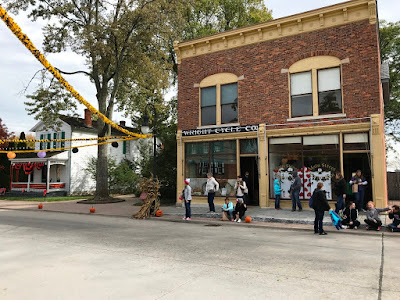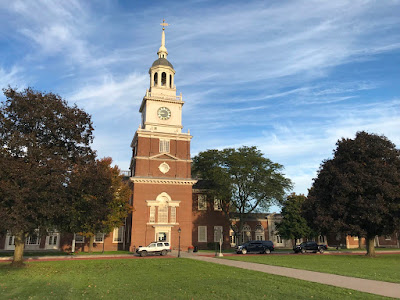Harry Truman was selected to be the vice presidential candidate when President Franklin Roosevelt ran for an unprecedented fourth term in 1944. It was widely thought that Roosevelt might not survive the term, and indeed he died in April 1945. Truman became president after serving as vice president for less than three months.
The Harry S. Truman Presidential Library and Museum in Independence, Missouri, documents his life and especially his years as president. The photo above shows the entrance. We visited today.
Inside the library is a re-creation of the Oval Office as it looked when Truman was president. Note the television in the photo below:
Below is the other side of the Oval Office. Truman liked to have guests pose for photographs in front of the globe and portrait of George Washington.
Truman won re-election in 1948, thus serving almost two full terms as president. There were many consequential decisions during his presidential years. Some of Truman's major foreign policy decisions and challenges which were presented and discussed at the library:
- The decision to drop the atomic bomb on Japan in August 1945.
- How to deal with post-war Germany and Japan, who surrendered in May and August 1945, respectively. In Europe, this led to the Marshall Plan which began in 1948.
- Planning for the United Nations had begun under President Roosevelt, but the actual creation of the UN occurred in 1945 under President Truman.
- How to deal with the spread of communism after World War II. With respect to the Soviet Union, the Truman Doctrine (announced in 1947) initiated a policy of containment and the Cold War. The North Atlantic Treaty Organization (NATO) was created in 1949. In China, the Communists and Nationalists fought a bitter civil war with the Communists winning in 1949.
- The decision to recognize Israel in 1948.
- The decision to engage in the Korean War in 1950.
There was a special exhibit at the library about Harry Truman's service in World War I. The library entrance (see photo at the beginning of this post) was flanked by a sign about this exhibit and a photo of Truman in his World War I uniform. Truman, who never earned a college degree, had been less than successful at both business and farming before the war. But he distinguished himself as an artillery officer in France in 1918, showing courage and leadership. Truman was discharged from the Army as a major in May 1919. He married Bess Wallace, whom he had long courted, the following month.
After leaving the presidency, Truman returned to Independence where he wrote his memoirs and established the library. Harry and Bess Truman, and their daughter and son-in-law, are buried in the courtyard of the library, shown below:
The flag was at half mast because of a tragic shooting at The Tree of Life Synagogue in Pittsburgh, Pennsylvania, on October 27.



















































